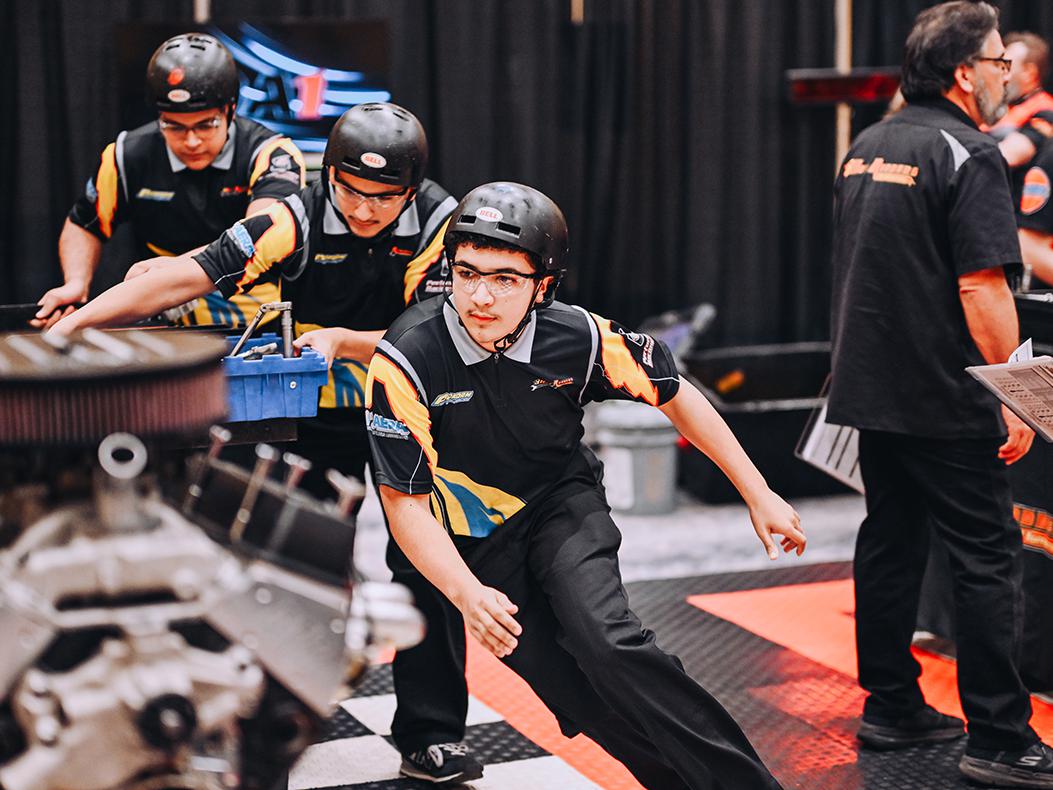Business Profile: Branik Motorsports
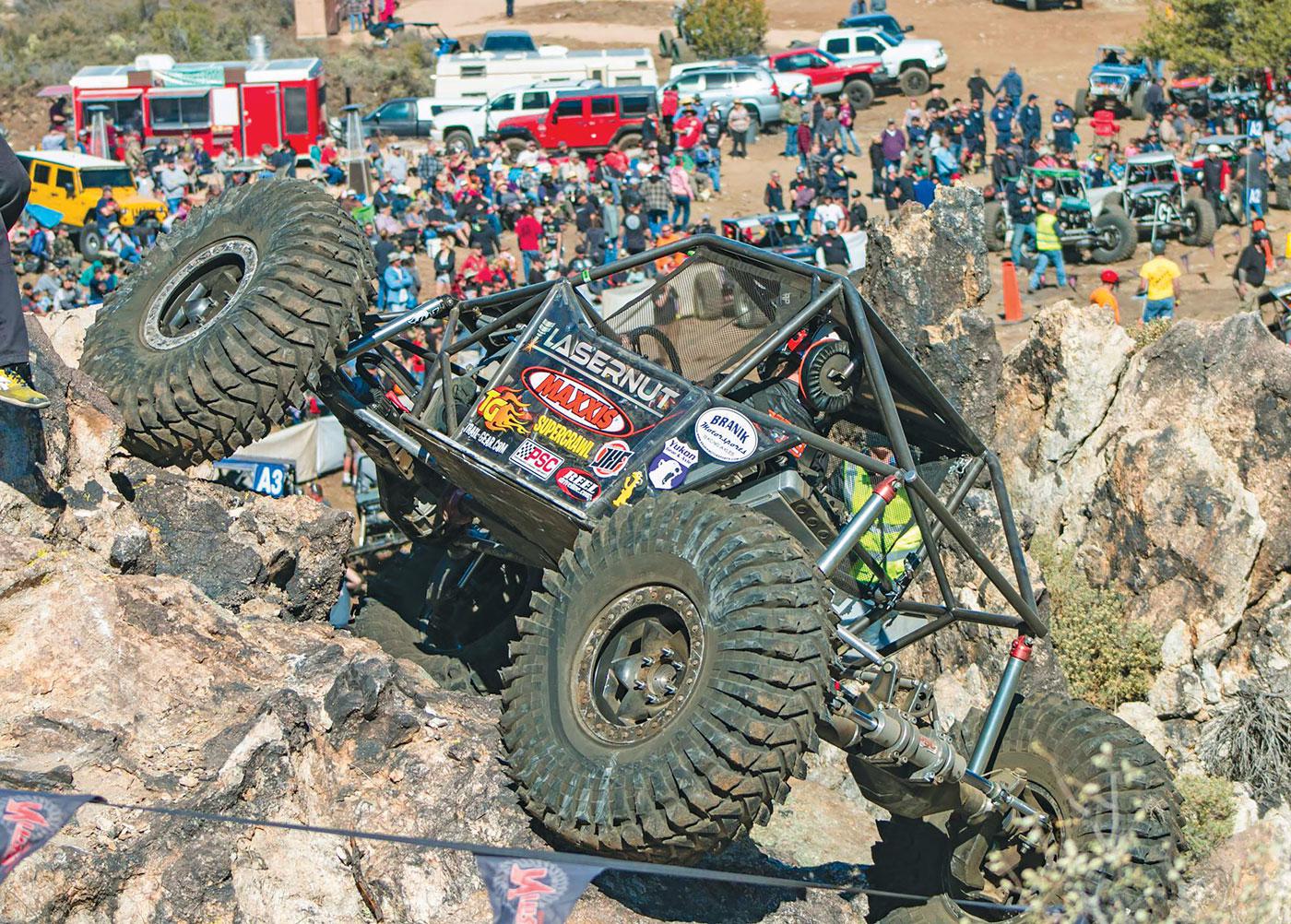
Photo courtesy of Haulin’ Yash Racing
Offering brand-name and custom-crafted components for rock crawling, rock bouncing, desert racing, and more, Branik Motorsports has built a reputation for customer service and rock-solid reliability.
The father-and-son team of Stan and Brandon Haynes didn’t set out to build an off-road racing business—but maybe it was inevitable that they did.
“We opened our doors in 2003 as a mold and die shop,” said Brandon Haynes, “making and repairing permanent molds, primarily for steering and suspension components for the Big Three automakers.” Stan Haynes named the company Branik, for Brandon and his sister Nicole.
Stan had previously operated an off-road shop, building roll cages and custom lift kits. “He was also into drag racing and circle track racing,” said Brandon. “I spent a lot of time as a child watching him race on weekends.” For a racer, owning a mold and die business presented new opportunities. “Having CNC and fabrication equipment, we started making parts for our own vehicles.” By 2007, Branik was offering racing and off-road components for sale.
Then came the crash of 2008–2009, and a precipitous drop in demand for new cars and light trucks. “We started making more off-road products, and off-road products were what kept us in business,” said Haynes. Branik, Inc. became Branik Motorsports. “Today our sales are 95% or more motorsports and off-road, and only 5% or less mold-making for industrial foundries.”
Branik customers drive rock crawlers, rock bouncers, rock racers, Class 1 buggies, Baja buggies, Trophy Trucks, monster trucks, and even pulling trucks; in WE Rock, XRock, Best in the Desert, and Ultra4, including the climactic King of the Hammers (KOH) race week. Branik maintains sponsorships with most of these sanctions and is involved, in some way, with “almost all of the dirt-type, off-road motorsports.”
The versatile manufacturing capabilities of the company’s 10,000-square-foot facility in Fort Wayne, Indiana, range from volume production to one-off customs. “The largest part of our off-road business is driveline: axle shafts, drive flanges, U-joints, and similar parts,” Haynes explained. Products also include Branik’s own Legacy brand brakes, steel and aluminum sway bar components, and steering components. Additionally, Branik sells parts from Wilwood, Reid Racing, and Yukon Gear & Axle.
SPECIALTY SUSPENSION
Leading and trailing suspension arms, custom-machined from 7075 aluminum billet, are another specialty. “All of our suspension arms have been one-off parts,” said Haynes. “We start with a sample of an existing arm, or a customer sketch or drawing with mounting locations, and then I design the arm on Solidworks. Once that’s done, we send the proof to the customer for approval—mostly on how it looks, but also to make sure it has all the features the customer wants. Then we order the material, write the programs for our CNC machines, and schedule production.” Start to finish, the entire process “usually takes three or four days, depending on the design, how complex it is, and the size.”
Demand for custom suspension arms and other custom parts is driven by the innovation that’s still allowed in off-road competition. “In Ultra4,” for example, “most of the vehicles are somewhat unique, especially in the 4400 class, which is unlimited. You run what you brung, and while some vehicles are similar, there are many different designs, from a lot of different shops that are all trying to build the better mousetrap.
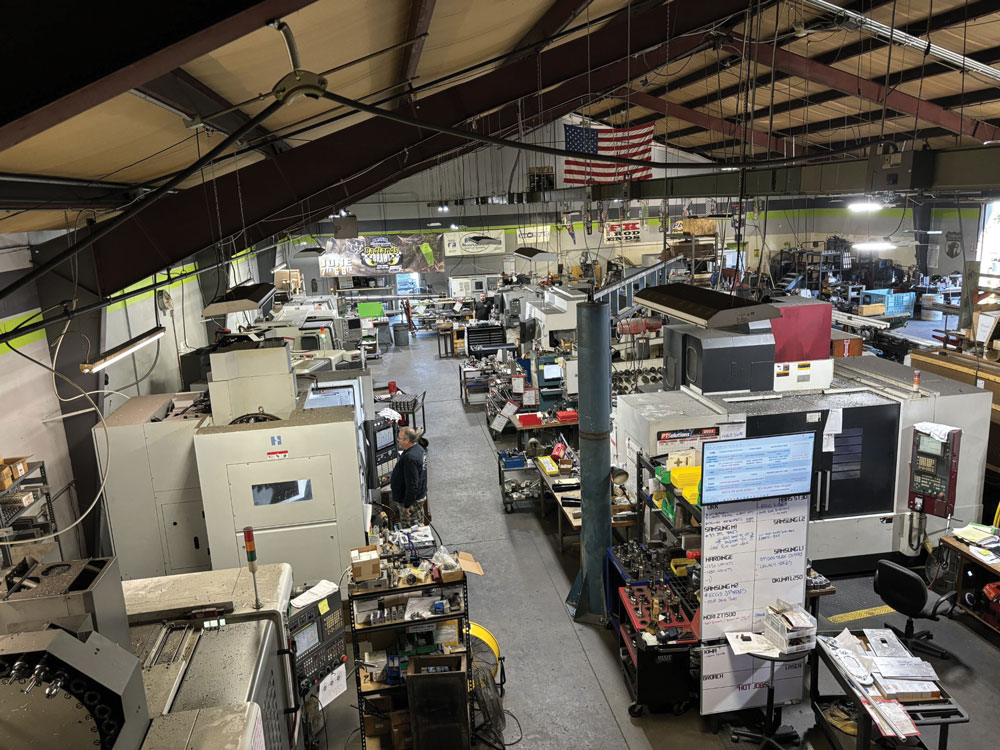
“A lot of these racers will start by fabricating a steel arm—cutting pieces out of plate and welding them together—and after they bend or break it several times, they start looking for a stronger solution,” continued Haynes. “A lot of them don’t believe that an aluminum part can be stronger than steel,” but with the right design it can be. Further, “aluminum will flex some. It is forgiving. The 7075 alloy we use is like a memory material; it will flex and then straighten out and not break.”
“I started racing off-road back in 2010, at the Badlands Off-Road Park, and I kept breaking axle shafts,” recalled Chad Hundt, a racer based in Plymouth, Indiana. “So I Googled ‘shops that make racing and off-road stuff,’ drove to Fort Wayne and said, ‘Can you guys help?’ I found an amazing group of people to work with. Brandon and his father Stan go above and beyond.”
Today Hundt runs Ultra4 4400 with axle shafts, Heim joints, knuckles, and sway bars supplied by Branik. “It’s good to put in a product that will last through the race and not leave you high and dry. If I do have a problem, they get a replacement out to me right away—and we race all over the US, as far away as the King of the Hammers in California.”
“I won’t buy axle shafts from anyone else,” added Cam Beasley of Locust Grove, Virginia. “My team competes in WE Rock, XRock, Trail Breaker, Trail Hero—all the big, hardcore rock-crawling events. I had heard of Branik through a couple of my buddies who run their products but didn’t think I needed them. Then four years ago, I bought a new Unlimited car, and it had off-the-shelf chromoly axle shafts—and I quickly broke a few stub shafts.
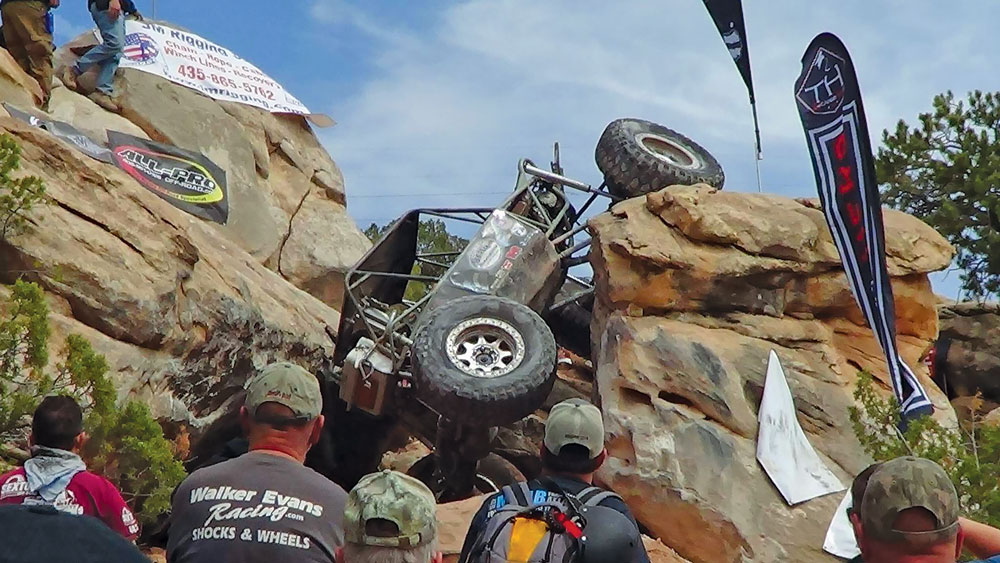
“I sell machinery for a living, and Branik is in my territory, so I stopped by and saw them. When I saw what they were all about, I ordered a set of their axle shafts. Now I am sponsored by Branik, and I run everything they make—brake hats and rotors, U-joints, and axle shafts—but the reason I go back to them is I just can’t break their stuff. And I am pretty hard on things: I have 40-inch tires, a crawl box, air lockers, the whole deal. I just won the last Put Up or Shut Up, and we were just hammering on the cars. If Branik makes it, I get it from them.”
MADE IN THE USA
We asked Haynes how Branik chooses suppliers, not only for materials like 7075, but also for machine tools and other manufacturing equipment. In either case, he answered, “a lot of it is driven by customer service, by having a relationship with the vendors. It’s important that they care about what they are selling.” That kind of relationship isn’t easy to find, however, as too many large suppliers show little interest in smaller-scale customers. “A lot of these vendors are commission-based,” he explained, “and they’ve got these huge companies as clients, and they are riding on Easy Street, making big bucks off of them. So it’s warming to have a sales rep who cares.”
Important as relationships are, however, Branik considers other factors as well. “We are still shopping price, quality, and where stuff is made,” said Haynes. “We do our best to source most of our materials domestically. We care about being made in the USA.” Partly—maybe primarily—that’s based on Branik’s “foundation of patriotism,” but there are practical advantages also. “The quality of materials, for sure, is more consistent with domestic products. The US mills hold quality control to a higher standard.”
Price, absolutely, has become an issue. Material costs “got real bad right after COVID-19,” and although some prices have “somewhat stabilized” over the last six months to a year, Haynes reminded us that “materials are commodities. It’s like buying gasoline—the prices are constantly going up and down, and our suppliers have gotten to a point where their quotes are good for only 48 hours. That makes it difficult for us to quote jobs.” He also reported “shortages and difficulties getting materials from some companies. So we’ve had to dig a little deeper and do our best to find new suppliers.”
The situation depends on the material and is worse for “higher-end” alloys such as 300M, the aerospace-grade, high-silicon nickel-steel alloy that Branik uses primarily in axle shafts. “There are a limited number of mills that produce 300M. We get it from one or two suppliers. It has actually gone up a lot in the last year,” even while costs for more common materials have stabilized. For Branik, the high price of 300M, as well as other materials, presents a quandary. “We can’t absorb all of it—obviously—so we have to adjust our prices, while we have to remain competitive and not price ourselves out of business. We keep an eye on what other companies are doing. We watch their websites. Our margins are floating, but we do our best to stay competitive.”
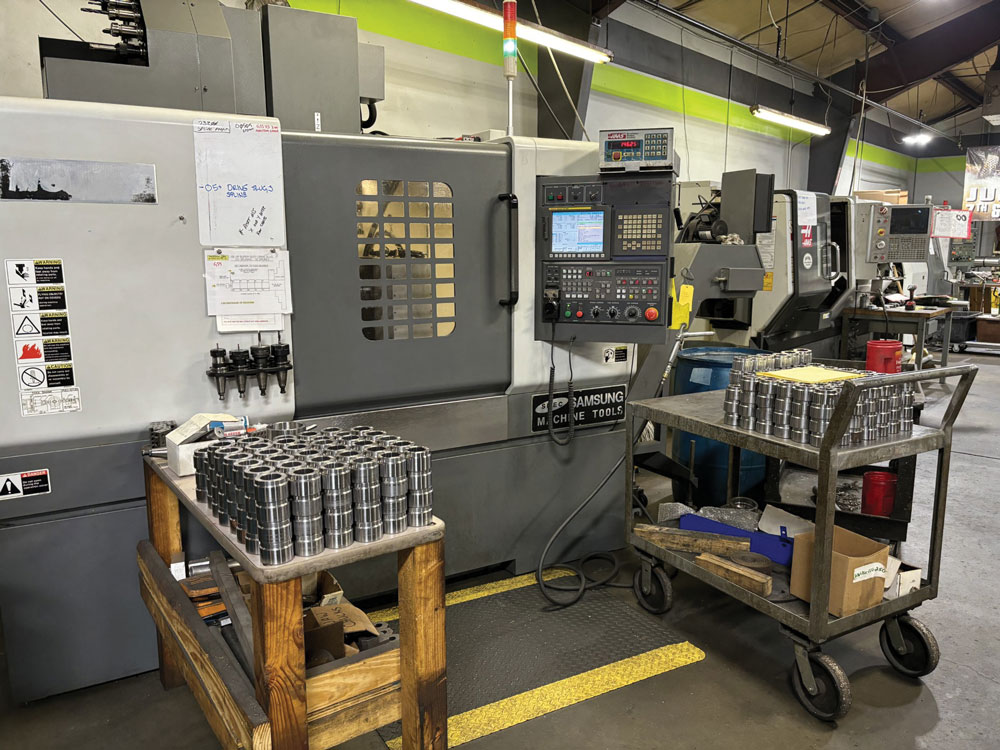
Haynes feels less “tied” to domestic products when buying machinery, but he still favors a few proven manufacturers. “We have Haas machines, and Hardinge machines, but we have also been buying a lot from Okuma. They really strive for quality and tight tolerances. Their controllers are phenomenal, and their capabilities are awesome.”
BEING THERE
Like so many other motorsports businesses, Branik has found that performance and participation are the most effective promotion. “We have been involved in off-road racing since 2007,” said Haynes. “We’ve been present in the off-road community, in several genres of the sport; we’ve supported the racers, and we’ve driven and participated ourselves. Participants and spectators see that we are supporting the community, and that has driven customers toward us.” Additionally, “We pride ourselves on having the best customer service we can possibly deliver.
“We do advertise in several sanctioning bodies,” continued Haynes. “We sponsor and support Ultra4, and we’ve sponsored several rock crawling and rock bouncing sanctions,” including WE Rock, XRock, and SRRS. “We have been the title sponsor for the 4800 Legends in King of the Hammers for the past five years. That goes a long way. Honestly, most of our sales and our growth have been through word-of-mouth, through being present and being involved. We haven’t had to do a lot of knocking on doors to promote sales.”
With that success in mind, Haynes plans to develop Branik’s event support even further. “Last year at KOH we had a vendor booth, and racers came to ask questions, or because they needed parts. We saw that as positive, and so we are going to expand by doing that at some other events next year, having people there who can answer questions.” Up until now, he added, “we haven’t done a lot of parts sales at events, but that is another potential area for growth, for producing more sales.”
Finding good employees has frankly been harder than finding customers. Especially since the Pandemic, “seeking employees has been a struggle,” making it difficult to “keep things rolling smooth and keep producing.” Branik has found some success with online recruiting services and even social media; the company has posted job openings on its Facebook page. One recent hire who was not on social media heard about the job opening from a friend who was, “and the friend suggested to him, ‘Hey, these guys are looking for people.’” As this is written, Branik employs seven people.

Training is mostly the on-the-job variety. “We have our own way of doing things,” said Haynes, “and our machinery is not the same as everyone else’s.” Branik has also taken advantage of CAD/CAM training offered by supplier Mastercam.
Retaining employees, said Haynes, “takes caring about them, paying them well, and doing our best to keep shop morale up and make work an enjoyable, fun place to be. We want employees who want to come to work.” He believes that Branik’s nominal four-day workweek, with 10 hours in a workday, contributes to that goal. “We get our main 40 hours in Monday through Thursday,” he explained. “We typically work five hours overtime on Friday as well, but we haven’t worked a Saturday or Sunday—as far as shop production—in seven or eight years.”
Haynes also understands that work culture is “driven by the owners. We’ve worked hard to build a good name. My dad and I are there every day, putting in our blood, sweat, and tears.”
Not surprisingly, most of the people who have come to work for Branik were already off-road enthusiasts, “or they’ve been converted in some form or fashion. A couple of guys who weren’t really into it ended up buying side-by-sides and coming out wheeling with us. I have an off-road vehicle, my dad has an off-road vehicle, probably 75% of the guys at the shop have something they can go out and recreate with.”
When asked about plans for the future, Haynes stressed manufacturing efficiency. “We are streamlining all of our processes. We are looking at better machinery and in the near future, robotics.” While Haynes didn’t share details, he mentioned new products also. “We’ve been continuing to expand the number of products we offer in the driveline segment, and we have immediate plans for growth in that market. We are always looking at different products, at making our existing products better, and growing with the market.
“The technology is constantly advancing, and so are the vehicles and the drivers. It’s crazy how in no-prep racing people are making 2,500 horsepower out of an LS motor. It’s constantly changing—and challenging us to make better products.”
 MEMBERSHIP LOGIN
MEMBERSHIP LOGIN JOIN PRI
JOIN PRI
